
What is Sublimation Printing: A Complete Guide for Beginners
If you've ever wondered what is sublimation printing or what is a sublimation printer, you're not alone. Many beginners hear these terms but aren't sure how the process works. In simple words, sublimation printing is a way to transfer colorful, lasting designs onto items like t-shirts, mugs, and even home décor. It uses special printers, inks, and heat to create prints that don't peel or fade.
This guide will explain everything step by step from how sublimation works to what you can print on so you'll know if it's the right choice for your projects.
What is Sublimation Printing and How Does it Work?
Sublimation printing is a digital printing method that uses heat and pressure to move designs from paper onto polyester and other coated surfaces. The end result is a bright, durable, and long lasting print. Unlike some methods that place ink on top of the fabric, sublimation allows the ink to become part of the material itself. This is why sublimated prints will not peel, crack, or wash away over time.
Here is the process explained step by step:
Step 1: Design Creation
Start by creating or choosing a digital design. Graphic software works best, but simple artwork or text also looks great.
Step 2: Printing on Transfer Paper
The design is printed onto sublimation transfer paper. This requires a sublimation printer and special sublimation inks, which are different from regular printer inks.
Step 3: Positioning the Transfer
The printed paper is placed on the blank product. Popular items include polyester t-shirts, ceramic mugs, metal plates, and coated wooden pieces.
Step 4: Heat Pressing
A heat press applies the correct level of heat and pressure for several seconds. This step is where the magic happens.
Step 5: Ink Transformation
The heat turns the solid ink into gas. That gas bonds with the fibers or coating, making the design a permanent part of the material.
Step 6: Cooling and Finishing
The transfer paper is removed. Once the item cools, the finished product shows a crisp, colorful design ready to use or sell.
Pros & Cons of Sublimation Printing
Like any printing method, sublimation has strengths and weaknesses. Understanding both sides gives you a clearer picture of what this process can and cannot do. If you are new to custom printing, knowing the pros and cons will help you make smarter choices.
Pros of Sublimation Printing
The advantages of sublimation are what make it one of the most popular printing methods today. From hobby crafters to small business owners, many people turn to sublimation because it offers quality, flexibility, and speed.
1. High Quality Print Results
Sublimation delivers sharp details and vivid colors. You can print complex designs, gradients, and even photographs without losing clarity.
2. Long Lasting Prints
Because the ink becomes part of the material, the design will not peel, fade, or crack. Items keep their bright look even after many washes.
3. Fast and Efficient
Once you have your design ready, printing and pressing take only a short time. This makes sublimation perfect for quick orders or on demand production.
4. Product Variety
You are not limited to shirts. Sublimation works on mugs, keychains, curtains, mouse pads, and many other coated products. This variety opens the door for many creative uses.
5. No Order Minimums
Unlike screen printing, you do not need large batches. Sublimation allows you to print a single custom item or hundreds, depending on your need.
6. Eco Friendly Printing
Sublimation uses less water and produces less waste compared to traditional methods. The process is cleaner and safer for the environment.
7. Full Customization
Every design can be unique. You can personalize products with names, logos, or photos without extra setup costs.
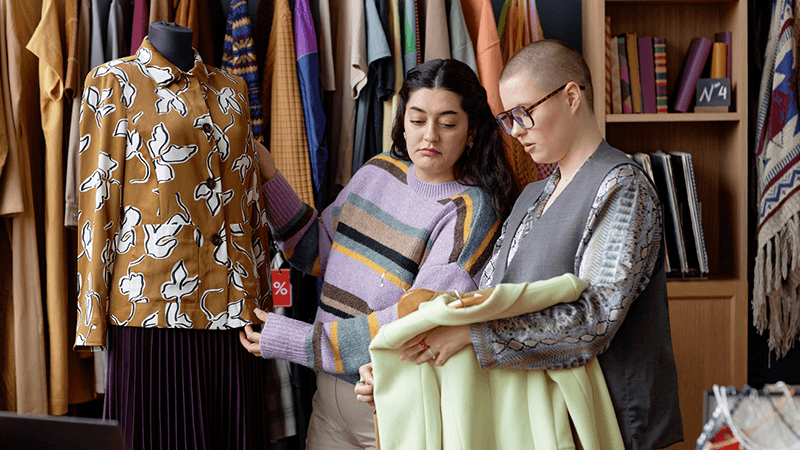
Cons of Sublimation Printing
Despite the benefits, sublimation is not perfect. Certain limits make it less suitable for every type of fabric or product. It is important to know these restrictions before investing in equipment or materials.
1. Limited Material Options
Sublimation only works on polyester fabrics or surfaces coated with a special polymer. Natural fabrics like cotton are not suitable unless treated.
2. White Creasing
If part of the fabric folds or is not pressed evenly, you may see white marks where the ink did not transfer. Careful setup is important to avoid this.
3. Avoid Dark Fabrics
For best results, sublimation requires light or white blanks. Printing on dark or black fabrics does not work well because the ink is translucent.
In short, sublimation printing is excellent for high quality, colorful, and lasting designs. However, it does require the right blanks and some attention to detail during the process.
Sublimation vs. Screen Printing vs. DTG: A Complete Comparison
When it comes to custom printing, three methods dominate the market: sublimation printing, screen printing, and direct to garment (DTG) printing. Each has its strengths, weaknesses, and best use cases.
If you are new to printing, it can feel confusing to pick the right one. This guide breaks them down side by side so you can see how they differ in materials, print area, quality, colors, durability, costs, and design features.
Material
Sublimation printing works best on polyester fabrics or other synthetic materials. It can also be used on items coated with a special polymer, such as mugs, plates, or phone cases. This makes it flexible for both apparel and non fabric products.
Screen printing, on the other hand, is more versatile with natural fabrics. It works very well on cotton, which is a favorite material for everyday t-shirts. It can also be applied to paper, plastic, glass, metal, and wood. That makes screen printing a good choice for posters, signs, or items that need bold, solid colors.
DTG printing is best suited for cotton or cotton blend fabrics. Since the ink is sprayed directly onto the fibers, it bonds nicely with natural materials. It does not work well on polyester or coated surfaces, so it is more limited than sublimation in that sense.
Print Area
One of the main strengths of sublimation is that it allows full coverage printing. You can create designs that go from seam to seam, covering the entire garment. For example, an all over printed t-shirt can have designs that wrap around the front, back, and even sleeves.
Screen printing does not offer this level of coverage. The design is limited to the size of the screen used, which usually covers only a certain area of the garment. While this works fine for logos or centered designs, it is not the best option for all over patterns.
DTG printing is limited to the platen size of the printer. The platen is the flat surface where the shirt is placed during printing. This means the print area is restricted, often to the front or back of the shirt. It cannot easily achieve full coverage prints.
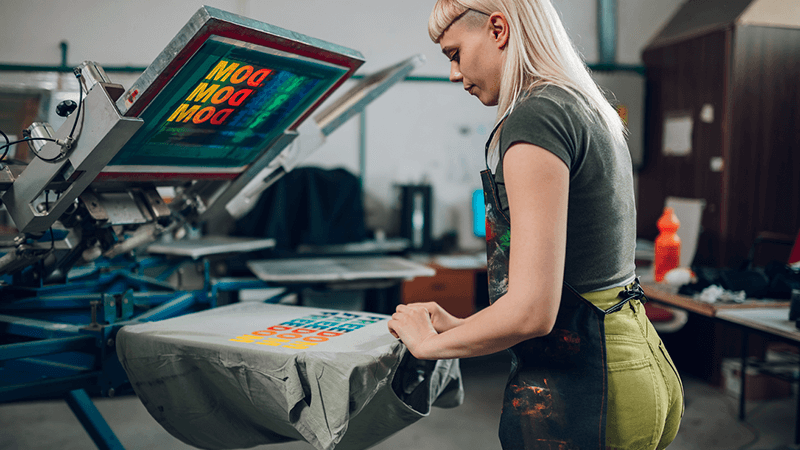
Print Quality
Sublimation is known for producing high quality, vibrant prints. Since the ink becomes part of the fabric or coated surface, the design looks smooth, sharp, and professional. It also retains fine details, gradients, and color transitions.
Screen printing also produces excellent quality, especially for bold and simple designs. It can even create special effects with glitter, metallic, or puff inks. However, small details may not always be as sharp as in sublimation or DTG prints.
DTG printing excels in producing detailed and high resolution designs. Since it works like an inkjet printer, it can recreate complex artwork or photographs with great accuracy. Colors blend smoothly, and small text remains clear.
Color Range
One of sublimation's biggest strengths is its unlimited color range. You can use as many colors as you want in one design without extra cost. This makes it perfect for colorful images, creative patterns, or photo prints.
Screen printing works best with simple designs that use only a few solid colors. While you can add more colors, each requires a separate screen, which raises costs and time. It is ideal for logos, sports jerseys, or artwork with bold outlines.
DTG printing supports both CMYK and RGB files. It can print with white ink, which allows designs on darker fabrics. This makes it versatile for producing both light and dark colored designs with many shades.
Durability
Sublimation printing is one of the most durable methods available. The design becomes part of the material, so it resists fading, cracking, or peeling. Even after many washes, the print stays bright and intact.
Screen printing is also durable but not as permanent as sublimation. Over time, prints may crack or fade, especially after repeated washes. Still, when done well, screen printed designs can last for years.
DTG prints are fairly durable and resist fading, though not as much as sublimation. They are more likely to show wear on heavily used garments but still hold up better than some cheaper printing methods.
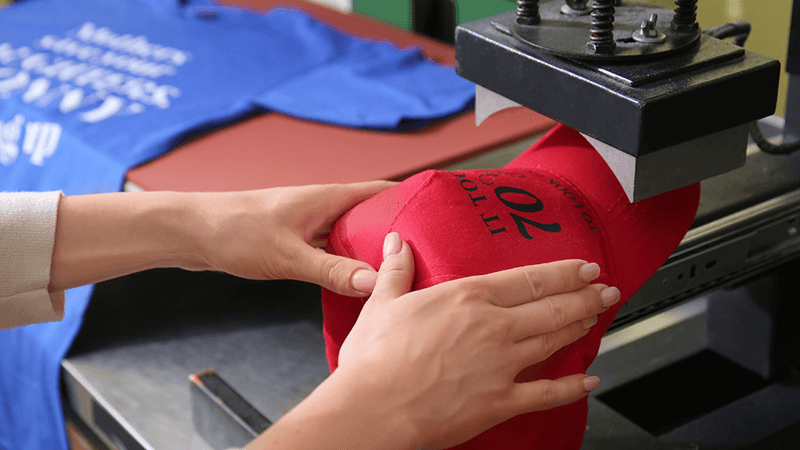
Costs
Sublimation is cost effective for both single items and large orders. Since there are no setup costs, you can print one custom shirt or hundreds without extra expense. This makes it great for small businesses or personal projects.
Screen printing involves higher setup costs. Each color in the design requires a separate screen, which takes time and money to prepare. While it becomes affordable for large batches, it is not ideal for small runs.
DTG printing has a low setup cost but higher cost per item. It is easy to start, but printing many shirts can become expensive. It works best for short runs or one off prints rather than bulk production.
Design Features
Sublimation printing shines when it comes to detail. Intricate designs, photo quality images, and full coverage prints are all possible without extra effort.
Screen printing is better suited for bold and simple designs. It is not ideal for detailed or intricate artwork, but it does allow unique effects that sublimation and DTG cannot achieve.
DTG printing combines the best of both worlds in some ways. It can handle complex designs, full color prints, and realistic images. It does not offer special effects like screen printing, but it excels in detail and flexibility.
All three methods have their place in the world of custom printing. Sublimation is the best choice for polyester and coated products, especially if you want bright colors and lasting prints. Screen printing works well for natural fabrics and bold designs, especially when producing in bulk. DTG printing is perfect for detailed, small run projects on cotton fabrics. The right method depends on your material, budget, and design goals.
What Can You Sublimate On?
Sublimation is one of the most flexible printing methods available today. It works on a wide range of products, allowing creators, businesses, and hobbyists to personalize almost anything. The only requirement is that the item should be polyester-based or coated with a sublimation surface. Below are some of the most popular categories you can sublimate on.
Apparel
Apparel is by far the most common use of sublimation. You can print on shirts, sweatshirts, hoodies, leggings, dresses, swimsuits, and jerseys. Designs can cover the entire garment from seam to seam, making it perfect for bold, eye-catching looks.
More sublimated apparel options include all-over print women's apparel, men's apparel, and even kids' apparel. With sublimation, your designs stay bright and soft to the touch, since the ink bonds directly with the fabric.
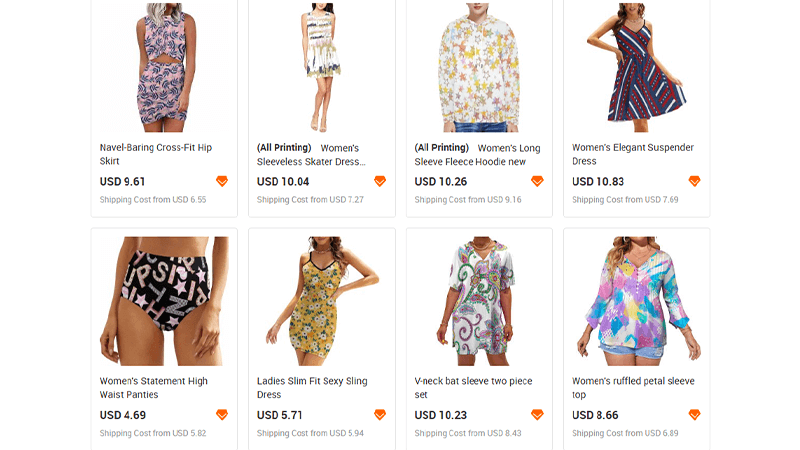
Accessories
Accessories are another great choice for sublimation printing. They let people carry a piece of custom art wherever they go.
Popular products include polyester hats, phone cases, tote bags, socks, and keychains. These small items make excellent add-on products for businesses or personalized gifts for customers.
More sublimated accessory options include all-over print hats, all-over print bags, sublimation shoes, and socks. They're lightweight, trendy, and perfect for everyday use.
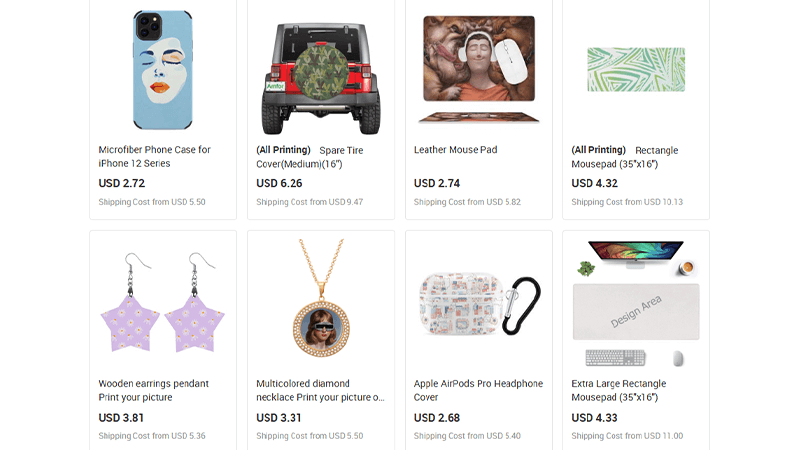
Home Decor
Sublimation also shines in the home decor category. It lets you transform everyday items into unique statement pieces. You can add warmth and comfort to your space with custom curtains, tablecloths, or pillowcases.
Whether you're decorating your bedroom, living room, or outdoor area, sublimation offers endless creative opportunities.
More sublimated home decor options include blankets, pillows, towels, and even sublimation flags. These items are durable, washable, and maintain their vibrant colors for years.
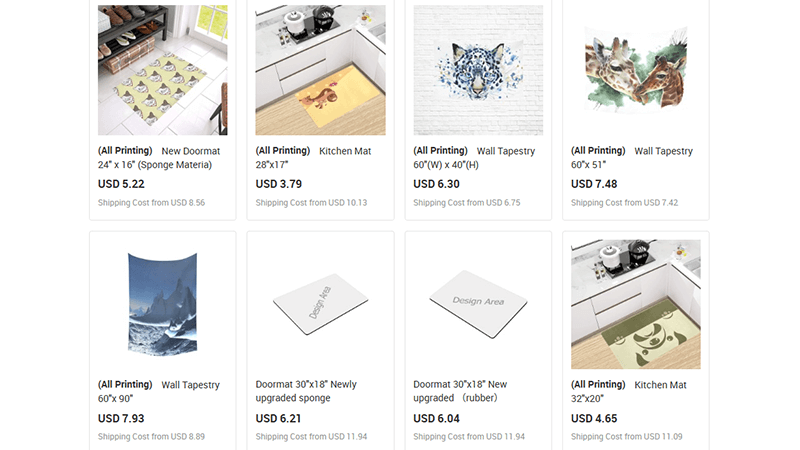
Mugs
Mugs are one of the easiest and most popular sublimation items. The process is simple and fast, making mugs a go-to option for businesses that specialize in personalized gifts.
You can create custom coffee mugs, travel mugs, color-changing mugs, or even couple mugs with matching designs. They're practical, affordable, and always in demand. Whether for daily use or as a thoughtful gift, sublimated mugs remain a timeless favorite.
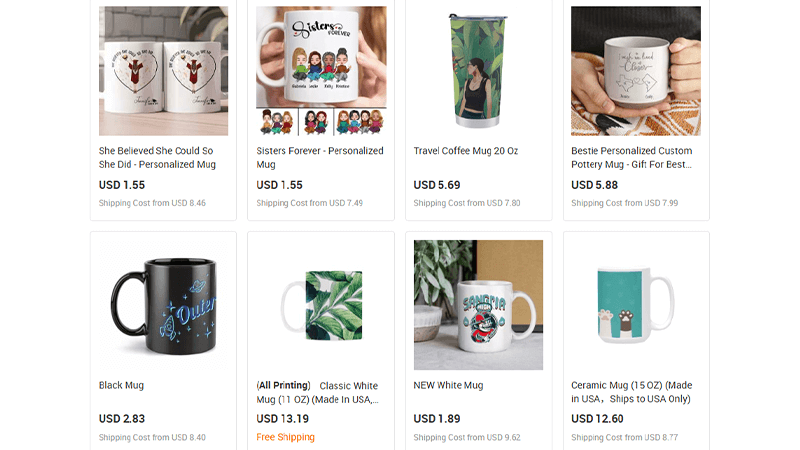
Why Choose Inkedjoy for Sublimation Printing?
If you are looking for a reliable print on demand service to create custom products, Inkedjoy makes the whole process easy and stress-free. Here are the main reasons why people choose Inkedjoy:

- Top-quality materials for prints: Inkedjoy uses only high-quality materials for its blanks. Shirts, mugs, and other products are made to hold colors well and last a long time. This means your prints look bright and sharp, and they won't fade or peel after a few washes or uses.
- Premium printing results: The printing process gives professional results every time. Designs come out with strong colors, smooth details, and a clean finish. Even tricky patterns or detailed images look clear and vibrant, which makes your products stand out.
- Easy-to-use design tools and mockup generator: You don't need to be a design expert to create with Inkedjoy. Their online tools let you upload artwork, move it around, and preview how the final item will look. The mockup generator saves time and gives you confidence before printing starts.
- Easy integrations: Inkedjoy connects with popular online store platforms like Shopify, WooCommerce, and Etsy. Once linked, your store and Inkedjoy work together automatically. Orders are sent straight to production, so you don't have to worry about managing each one manually.
- Rapid delivery worldwide: Inkedjoy ships quickly to customers all over the world. Whether your buyers are close to home or overseas, they get their orders on time. Fast and reliable delivery keeps customers happy and helps you build a trusted brand.
In short, Inkedjoy makes sublimation printing simple, professional, and accessible for everyone.
Conclusion
Sublimation printing is one of the most reliable ways to create bright, lasting designs. From apparel to home decor and mugs, it gives you unlimited creative options. The process is simple, affordable, and delivers results that do not fade or peel.
While it works best on polyester or coated materials, it offers full freedom for detailed and colorful designs. If you are looking to build a business or create custom gifts, sublimation is a smart choice. With the right tools and partners, you can turn your designs into products people will love.
FAQ
Is dark fabric suitable for sublimation printing?
No. Sublimation printing works best on white or very light-colored materials. Dark fabrics do not allow the ink to show clearly, so prints will not look sharp or vibrant.
What kind of paper is needed for sublimation printing?
You need a specially coated heat transfer paper. This paper holds the sublimation ink and allows it to transfer cleanly to the product when heat and pressure are applied.
Can I use sublimation ink in a normal printer?
It's not recommended. Sublimation ink needs printers that are designed for it. Using a regular printer may damage the machine and give poor results.
Is sublimation printing better than vinyl?
Sublimation is more durable because designs fuse into the material and last longer without peeling or cracking. Vinyl, however, can be used on a wider range of fabrics like cotton and linen, making it a good choice for some projects.



